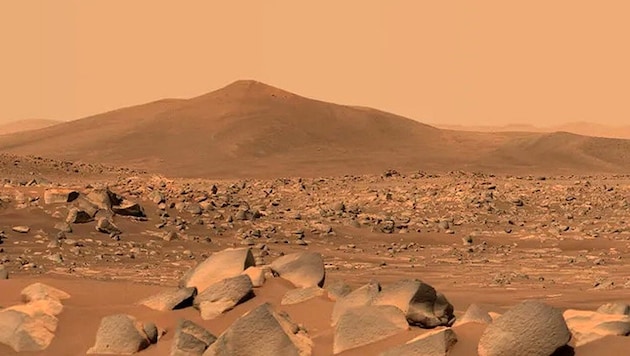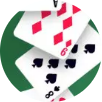"Very unusual"
NASA rover finds over 4000 bright stones on Mars
The rust-red surface of Mars has earned it the nickname Red Planet. Now, however, images sent to Earth by the "Perseverance" rover have astonished researchers. The images show that thousands of light-colored stones are scattered across the Martian surface.
The images show more than 4,000 light-colored, pebble-sized stones scattered across the entire crater floor. "These rocks are very unusual, and we are trying to understand their origin," explained Candice Bedford, a planetary scientist at Purdue University and member of the Mars 2020 science team, at the 54th Lunar and Planetary Science Conference in Woodlands, Texas, in mid-March.
Analysis shows: rocks contain no water
An initial analysis of the rock with the instruments of the "Perseverance" rover revealed that it is dehydrated. The rocks not only lack water, but also other minerals such as iron, magnesium, calcium and sodium.
"These rocks are pretty depleted in a lot of ways," Bedford says. She suspects that their dehydrated nature indicates that they were heated and metamorphosed by processes such as lava flows or asteroid impacts elsewhere on Mars before they were deposited in the crater.
The team is keen to understand the origin of these rocks to gain insights into Mars' past, including when water was present in Jezero Crater, a dried-up crater that is now an arid landscape.
Rover searches for microbial life on Mars
Launched from Cape Canaveral in July 2020, the rover touched down in Jezero Crater on February 18, 2021, in a risky maneuver that lasted several minutes. The rover, which cost around 2.2 billion euros, is searching for traces of past microbial life on Mars and researching the planet's climate and geology.
Camera software from Austria on board
The robot (pictured), which weighs around 1000 kilograms and is the size of a small car, has seven scientific instruments, 23 cameras and a laser on board. Research institutes in Graz and Vienna have supplied software for one of the cameras. This evaluates their images in a completely new three-dimensional way.











Kommentare
Da dieser Artikel älter als 18 Monate ist, ist zum jetzigen Zeitpunkt kein Kommentieren mehr möglich.
Wir laden Sie ein, bei einer aktuelleren themenrelevanten Story mitzudiskutieren: Themenübersicht.
Bei Fragen können Sie sich gern an das Community-Team per Mail an forum@krone.at wenden.